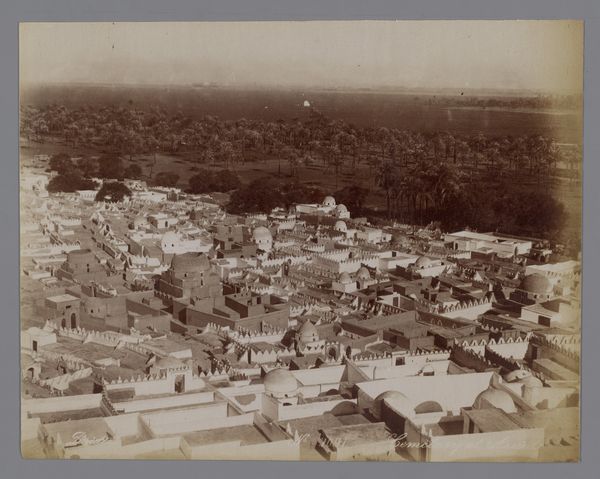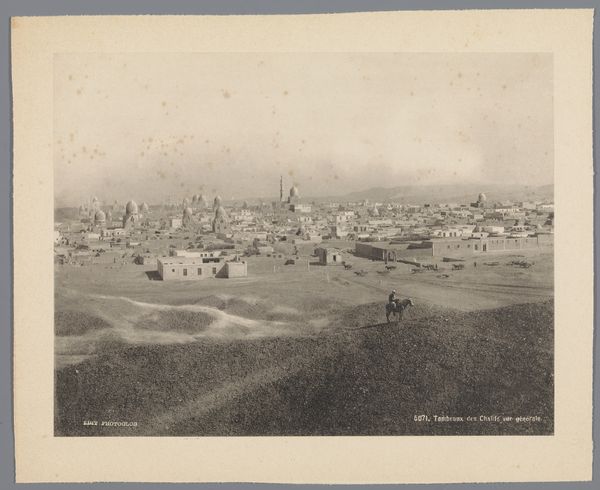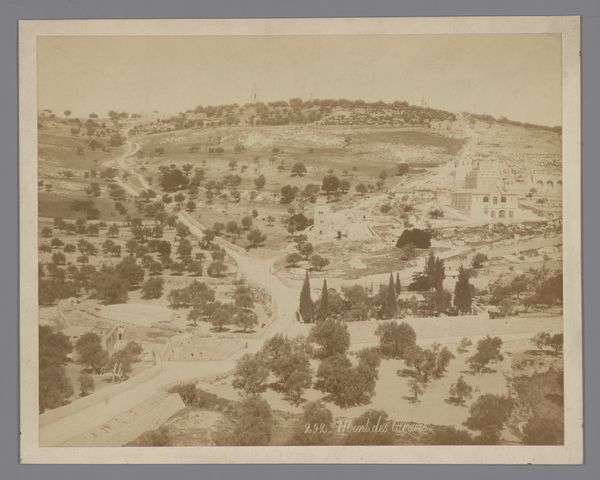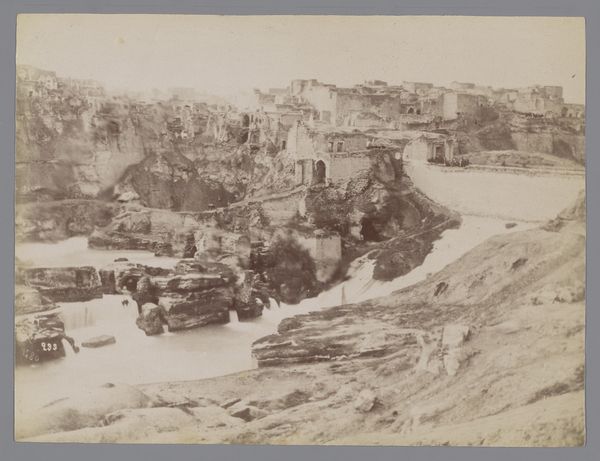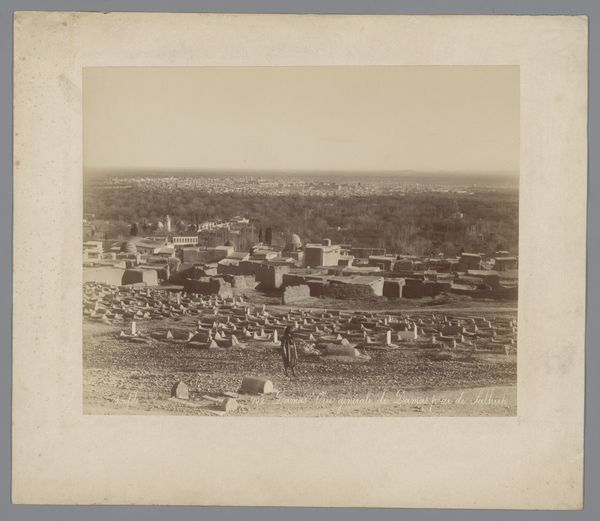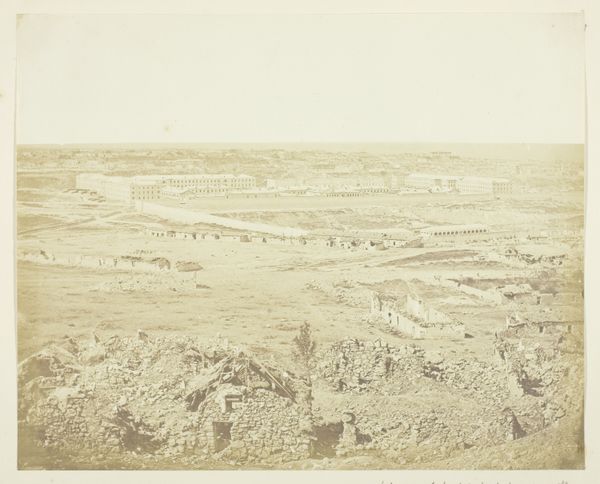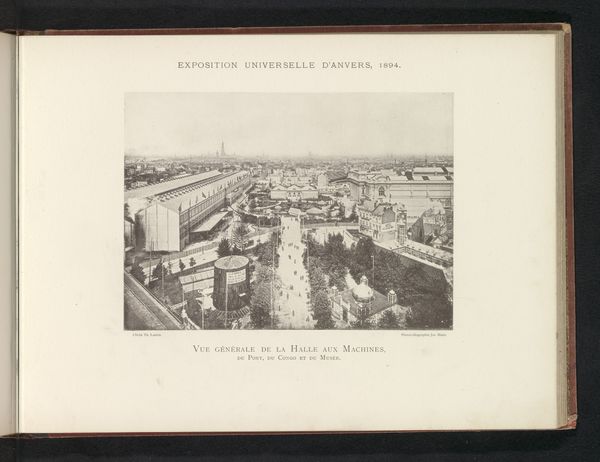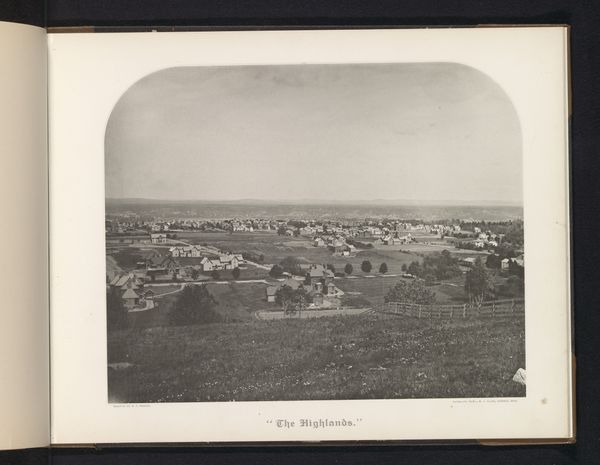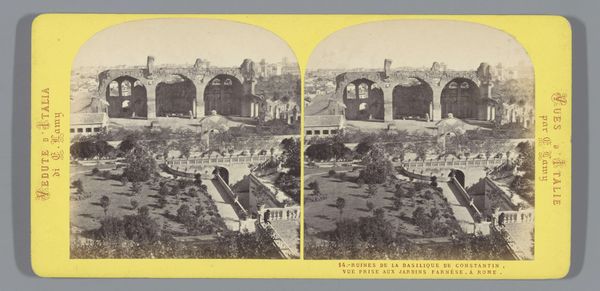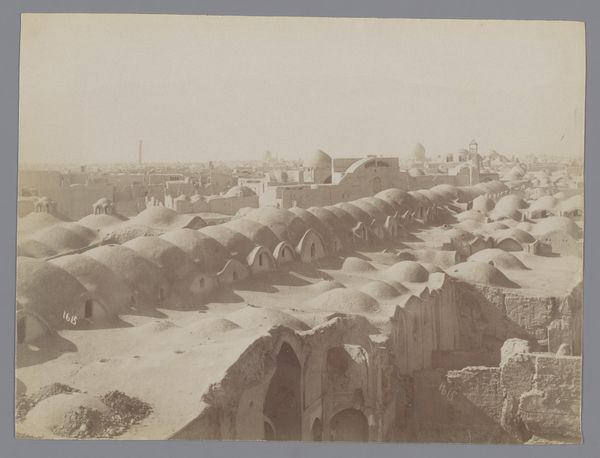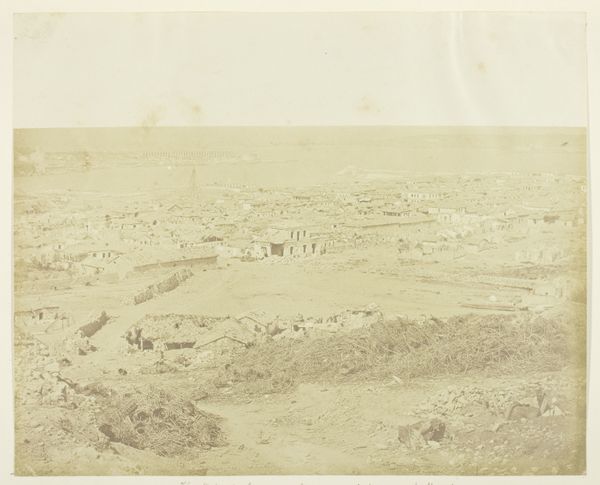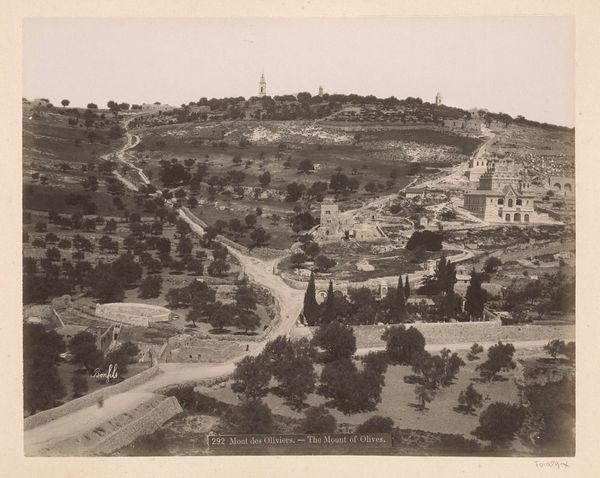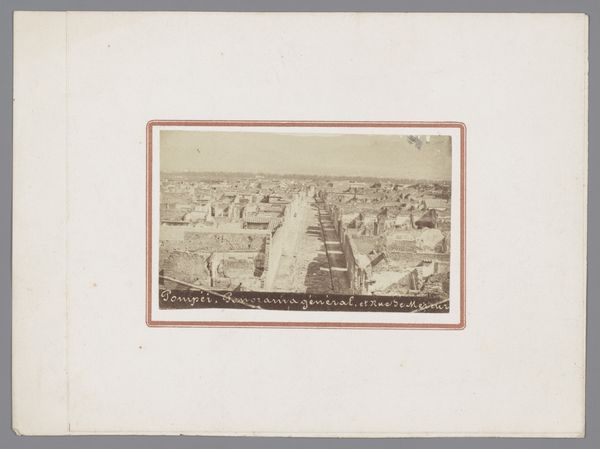
photography
#
landscape
#
photography
#
realism
Dimensions: height 85 mm, width 170 mm
Copyright: Rijks Museum: Open Domain
Editor: This fascinating stereoscopic photograph, "Gezicht op Breteuil, Oise," was taken in 1871 by Léon & Lévy. The greyscale tonality creates a somewhat stark, documentary feel, and the doubled format is compelling, given the fraught historical context. I’m curious, what are your first impressions when looking at this image? Curator: I see a stark visual representation, nearly a memento mori. The duplicated view serves as a double mirror reflecting the viewer back onto the past. Here are figures, not just in a landscape, but embedded within a visible record of societal turmoil. Look at the rawness of the earthworks in the foreground against the backdrop of the seemingly placid cityscape. Doesn't this opposition echo the emotional and psychological discord of the period? Editor: It certainly highlights the disruption! How does that translate, given it’s a stereograph meant for entertainment? Curator: Exactly. Think of the cultural weight. In 1871, France had just endured the Franco-Prussian War and the Paris Commune. A stereograph offered entertainment, yes, but consider what it might have meant to look at such an image. Could it offer a moment of detached contemplation or stir conflicted memories? The mundane figures against the backdrop of social fracture form a powerful juxtaposition. Does the photographer want the viewer to see how those at war change the landscape, in a world where seeing is believing? Editor: It’s amazing to think about all these different layers of meaning and how a simple photograph can hold so much. Thank you for your insight into understanding this image and its historical context! Curator: The photograph really serves to reinforce the past by showing it again and again. Food for thought, indeed!
Comments
No comments
Be the first to comment and join the conversation on the ultimate creative platform.
